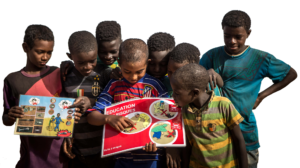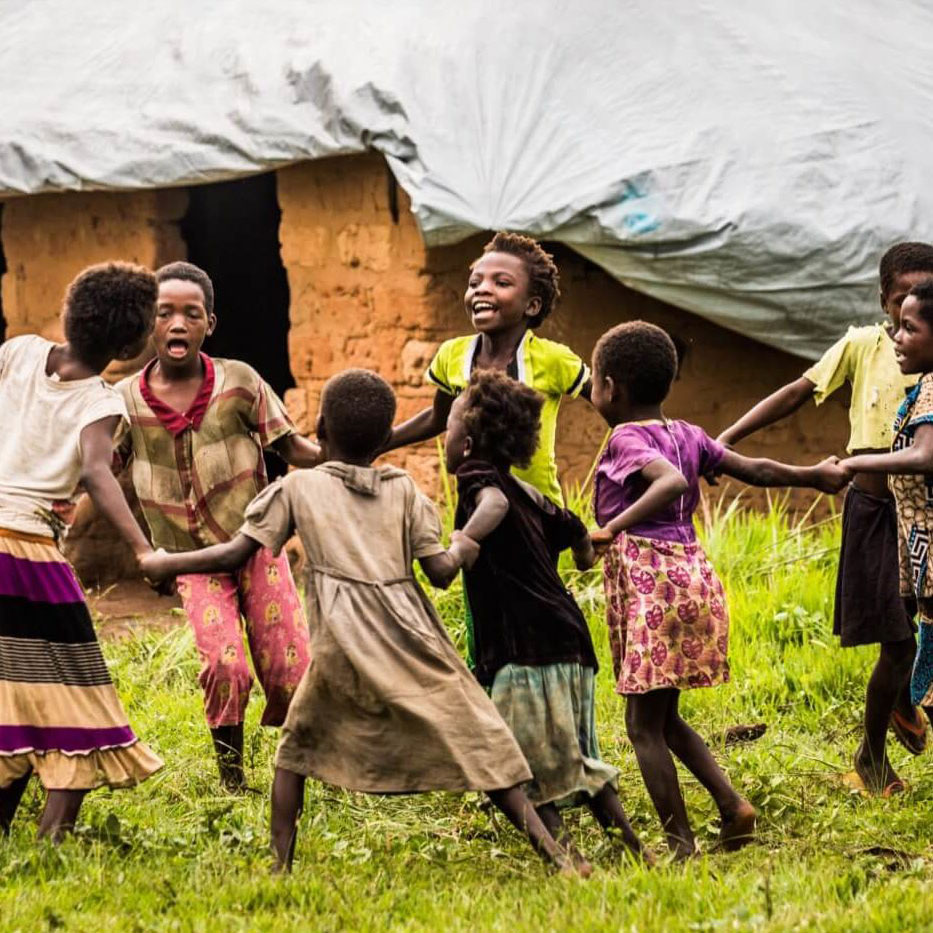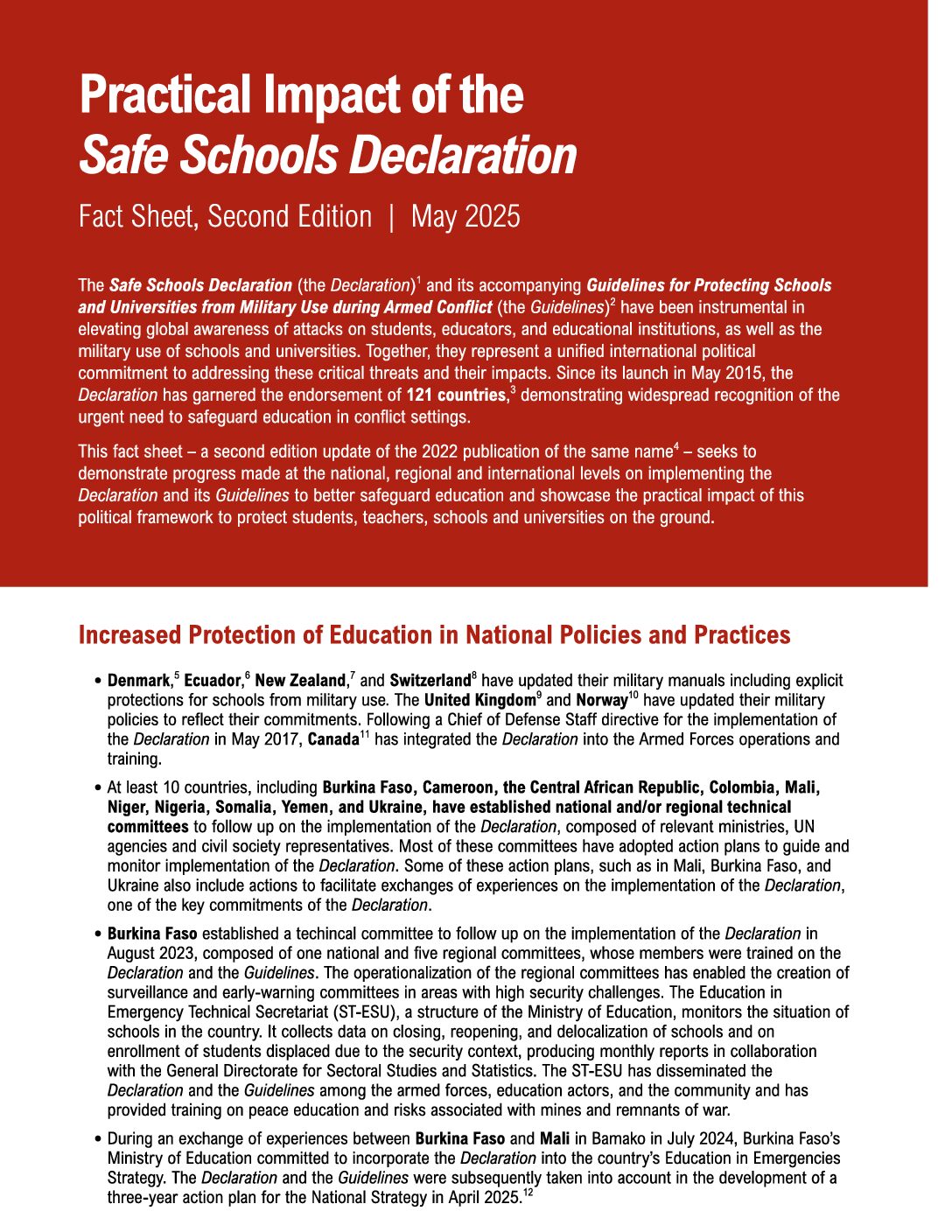GCPEA News
Widespread Attacks on Education Worldwide More than 11,000 attacks in Past 5 Years
GCPEA Press Release
July 9, 2020
More than 22,000 students, teachers, and academics were injured, killed, or harmed in attacks on education during armed conflict or insecurity over the past five years, according to Education under Attack 2020, a new 300-page report published today by the Global Coalition to Protect Education from Attack (GCPEA). More than 11,000 separate attacks on education facilities, students and educators took place between 2015 and 2019.
Attacks on education include bombing and burning schools and universities, and killing, maiming, raping, abducting, arbitrarily arresting, and recruiting students and educators at, or en route to and from, educational institutions by armed forces, other state actors, or armed groups, during armed conflict or insecurity.
“Pursuing an education is a fundamental right, yet in an increasing number of countries, the lives of students and educators are at risk simply for teaching and learning,” said Diya Nijhowne, executive director of GCPEA. “Schools and universities should be safe havens, not sites of destruction or fear.”
Education under Attack 2020 finds that the number of countries experiencing attacks on education has increased in recent years. Between 2015 and 2019, 93 countries experienced at least one reported attack on education, marking an increase of 19 affected countries, up from 74 countries in the previous reporting period of 2013-2017.
Attacks on education emerged in new countries, including Guinea and Nicaragua. In Burkina Faso and Niger, which were only minimally affected in prior years, attacks rose starkly, contributing to the closure of more than 2,000 schools. Non-state armed groups operating in these two countries carried out many of these attacks.
Numbers of attacks on education remained alarmingly high in Yemen and the Democratic Republic of the Congo (DRC), with each experiencing over 1,500 documented attacks on schools. Afghanistan, Palestine, and Syria each experienced over 500 attacks on schools. In Afghanistan, Syria, and Yemen, GCPEA found the widespread use of explosive weapons during targeted and indiscriminate attacks on educational institutions.
Students and educators were most frequently harmed by direct attacks in Afghanistan, Cameroon, and Palestine. In Cameroon, over 1,000 school and university students and staff were threatened, abducted, injured, or killed by armed groups or state armed forces.
Attacks on higher education were reported in 73 countries. Law enforcement, military forces, or pro-government armed groups used excessive, even lethal, force to disperse university students and staff protesting on campuses or over education-related grievances, primarily in situations of insecurity. In 36 of the 37 countries profiled, over 9,100 higher education students and staff were injured, killed, abducted, or arrested between 2015 and 2019.
A significant – and preventable – cause of attacks was the use of schools for military purposes, GCPEA found. Armed forces, other state actors, and armed groups used schools and universities for military purposes in 34 countries between 2015 and 2019, including as bases, detention centers, and weapons stores. In Myanmar, the United Nations verified 51 incidents of military use in 2019. In one example, armed forces used a school to detain over 270 men and boys in Rakhine State, opening fire and killing six prisoners and wounding eight.
Armed groups or armed forces also targeted schools to recruit children. In the past five years, state armed forces or armed groups reportedly recruited students from schools in 17 countries. In Somalia, the UN verified that armed groups recruited at least 280 children from schools in 2017.
Armed forces, security forces, or armed groups were reportedly responsible for sexual violence in, or on the way to or from, schools and universities in at least 17 countries in the past five years.
The overall number of attacks globally declined slightly from the 2013-2017 reporting period, from 12,700. In 2015-2019, attacks on education significantly decreased in 10 countries, including Afghanistan, Bangladesh, Iraq, Nigeria, Palestine, South Sudan, and Ukraine.
Attacks on education not only kill or injure individual students and teachers, they also impact communities for years. With buildings or teaching materials destroyed and students and teachers living in fear, schools and universities close and some students never resume their education, impeding long-term development.
Attacks on education have specific impacts on female students and educators. GCPEA found that women and girls were targeted due to their gender in attacks on education in at least 21 countries between 2015 and 2019. Pregnancy from rape, the health consequences and stigma of sexual violence, the risk of early marriage, and the privileging of boys’ education over girls’, all make it particularly difficult for girls to return to school.
Governments and armed groups should end attacks on education and refrain from using schools and universities for military purposes, GCPEA said. Governments need to hold those responsible for attacks to account, develop gender-responsive safety and security plans to prevent and respond to attacks, and strengthen monitoring and reporting of attacks on education. Donors, international organizations and civil society should support governments in these endeavours.
GCPEA called on countries to endorse and implement the Safe Schools Declaration, a political commitment to protect students, educators, schools, and universities in armed conflict. Currently, 104 countries have endorsed the Declaration. By endorsing the Declaration, countries commit to taking concrete steps to protect education in armed conflict, including by using the Guidelines for Protecting Schools and Universities from Military Use during Armed Conflict. Half of the countries profiled in the report are not signatories.
“As we mark the fifth anniversary of the Safe Schools Declaration this year, all states should endorse and use the Declaration to ensure that girls and women, as well as men and boys, can learn and teach in safety,” Nijhowne said. “Perpetrators of attacks on education in armed conflict and insecurity must be brought to justice so the right to education can be secured for everyone.”
Support for Education under Attack 2020 has been generously provided by the Education Above All Foundation, Education Cannot Wait, the Norwegian Ministry of Foreign Affairs and an anonymous donor.



